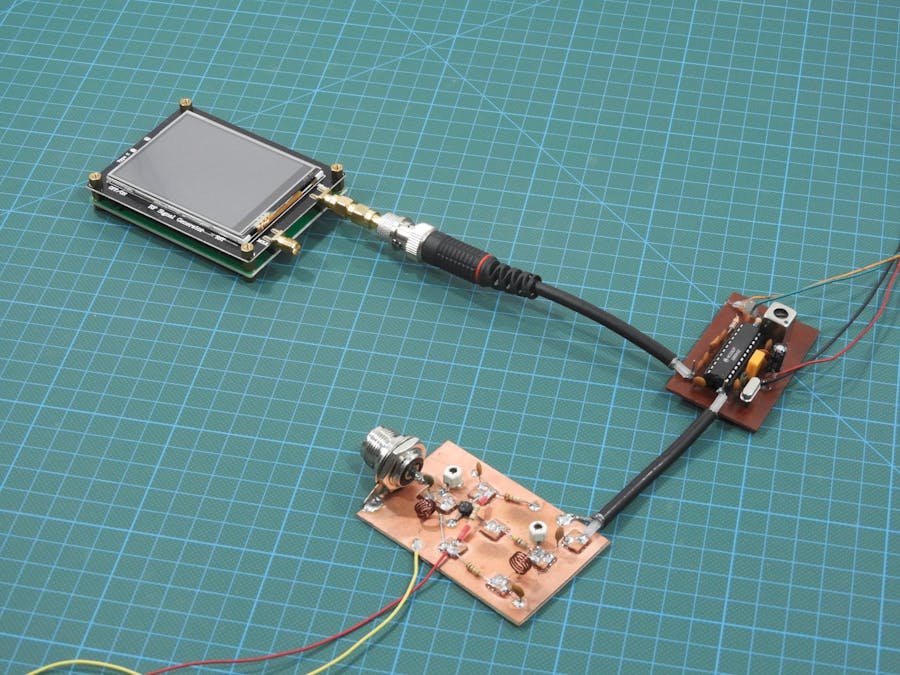This project is about MC3362and ADF4351based modularized, 2-meter narrow band FM receiver. In this design, the receiver splits into three modules as RF preamplifier, MC3362 tuner, and ADF4351 oscillator. The RF preamplifier builts around BF900 dual-gate MOSFET. The tuner stage builts using the popular MC3362, low power narrowband FM receiver IC. For the oscillator, we use the ADF4351 DDS RF signal generator module.
The core component of this receiver is MC3362IC. This IC was designed by Motorola and is no longer in production, but this IC is still available to purchase in many online stores. The chip we used in this receiver was purchased from a local electronic component store for LKR 75 (USD 0.2).
The RF preamplifier used in this receiver extracts from the N.Ganesan's (VU3GEK) LRR200, 2-meter band FM receiver project.
In this prototype, the above preamplifier was built as a module using a Manhattan construction technique. The SO-239 antenna input socket is also soldered directly to the preamplifier board. The preamplifier output connects to the input of the 1st mixer stage of MC3362 via a 50Ω coaxial link. This preamplifier is designed to operate using an 8V DC power source. If the BF900 transistor is not available, use an equivalent dual-gate, UHF range, N-channel MOSFET transistor.
The tuner stage of this receiver is a minimal version of the MC3362 circuit. This tuner module mainly consists of 10.7MHz and 455kHz ceramic filters, a 42IF301 - I.F transformer, and a 10.245MHz crystal. The local oscillator stage of this receiver is modified to use the ADF4351 RF signal generator. During the prototyping stages, we drive this module using a 5V DC power source.
For the oscillator stage, we use the ADF4351 DDS RF signal generator module. Apart from the ADF4351 signal generator, this module has an STM32F103-based driver and a TFT touch LCD. The RF output of this oscillator is directly connected to one of the local oscillator terminals of MC3362 IC. This module is designed to work with 5V. The supply voltage is feeding to the module through the onboard USB connector.
During the prototyping stages, we connect the AF output of this receiver to the TPA3001D1 power amplifier. Any AF power amplifier with 3W or higher rated output will work well with this receiver.
After connecting a suitable antenna, we were able to receive a very clear 2-meter band signal from the receiver. During the testing phase, we got extremely good reception of the RSSL VHF net at 145.625MHz (local oscillator frequency - 134.875MHz) from this receiver. For this test, we used a 5-element (homebrew) Yagi antenna.
PCBWaysponsored this project. PCBWay offers high-quality PCB manufacturing, PCB assembly, and CNC/3D printing services for a competitive price. Check their website for more information and pricing.
All the KiCAD design files and schematic diagrams are available on google drive. The PCB of this receiver can be directly ordered from the PCBWay project page.






Comments